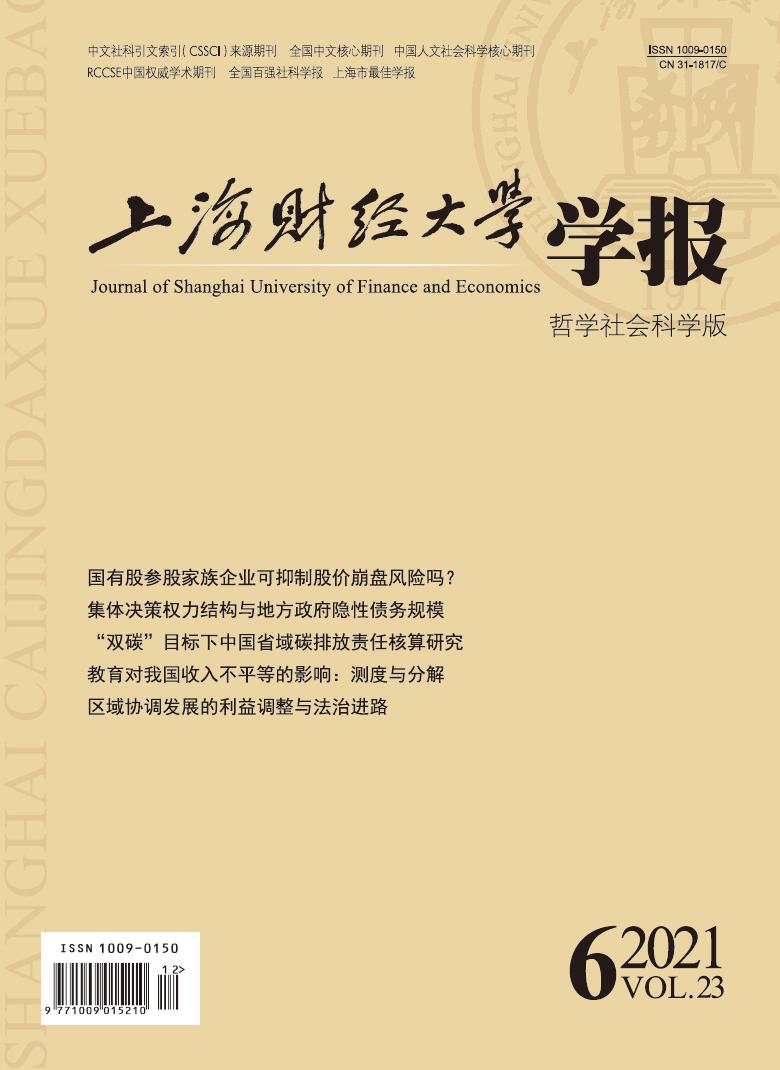平台对低质量商家的治理力度往往低于社会最优水平,导致消费者权益及社会福利受损。为了明晰平台治理策略的选择激励及其影响,文章通过构建博弈模型,分别在寡头市场和垄断市场下分析并比较了平台的治理力度,进一步从政府规制的角度,分析了不同市场环境下的监管策略。研究发现两类产品的质量差异越大,平台治理强度越强。与社会最优相比,平台治理强度存在一定不足,且网络外部性和商品间质量差异的提高会进一步放大两者的差距,因此政府监管力度应随网络外部性和产品质量差异的提高而提高。文章从商家治理的角度丰富了对平台经济的理论探索,细致地刻画了治理强度与网络外部性以及商家质量间的关系。研究结论对平台自我治理策略选择、政府管制力度选择、保障消费者权益及提升社会福利有所启示。
产品质量、平台治理与政府监管研究
摘要
参考文献
1 汪旭晖, 张其林. 平台型网络市场“平台—政府”双元管理范式研究——基于阿里巴巴集团的案例分析[J]. 中国工业经济, 2015, (3).
2 王勇, 冯骅. 平台经济的双重监管: 私人监管与公共监管[J]. 经济学家, 2017, (11).
3 王勇, 刘航, 冯骅. 平台市场的公共监管、私人监管与协同监管: 一个对比研究[J]. 经济研究, 2020, (03).
4 吴德胜, 李维安. 声誉、搜寻成本与网上交易市场均衡[J]. 经济学(季刊), 2008, (4).
5 谢康, 刘意, 肖静华, 等. 政府支持型自组织构建——基于深圳食品安全社会共治的案例研究[J]. 管理世界, 2017, (8).
6 Albuquerque P, Pavlidis P, Chatow U. Evaluating promotional activities in an online two-sided market of user-generated content[J]. Marketing Science,2012,31(3):406–432. DOI:10.1287/mksc.1110.0685
7 Amelio A, Jullien B. Tying and freebies in two-sided markets[J]. International Journal of Industrial Organization,2012,30(5):436–446. DOI:10.1016/j.ijindorg.2012.03.002
8 Anderson S P, Peitz M. Media see-saws: Winners and losers in platform markets[J]. Journal of Economic Theory,2020,186:1–43.
9 Armstrong M. Competition in two-sided markets[J]. The RAND Journal of Economics,2006,37(3):668–691. DOI:10.1111/j.1756-2171.2006.tb00037.x
10 Armstrong M, Wright J. Two-sided markets, competitive bottlenecks and exclusive contracts[J]. Economic Theory,2007,32(2):353–380. DOI:10.1007/s00199-006-0114-6
12 Belleflamme P, Toulemonde E. Negative intra-group externalities in two-sided markets[J]. International Economic Review,2009,50(1):245–272. DOI:10.1111/j.1468-2354.2008.00529.x
13 Brühn T, Georg G. Exclusionary practices in two-sided markets: The effect of radius clauses on competition between shopping centers[J]. Managerial and Decision Economics,2018,39(5):577–590. DOI:10.1002/mde.2928
14 Caillaud B, Jullien B. Chicken & egg: Competition among intermediation service providers[J]. The RAND Journal of Economics,2003,34(2):309–328. DOI:10.2307/1593720
17 Gawer A, Cusumano M A. Platform leadership: How intel, microsoft, and cisco drive industry innovation[M]. Harvard Business School Press, 2002.
18 Hagiu A, Lee R S. Exclusivity and control[J]. Journal of Economics & Management Strategy,2011,20(3):679–708.
19 Hu D, Zhao J L, Cheng J. Reputation management in an open source developer social network: An empirical study on determinants of positive evaluations[J]. Decision Support Systems,2012,53(3):526–533. DOI:10.1016/j.dss.2012.02.005
20 Iansiti M, Levien R. The keystone advantage: What the new dynamics of business ecosystems mean for strategy, innovation, and sustainability[M]. Harvard Business Press, 2004.
21 Jiang Y, Guo H. Design of consumer review systems and product pricing[J]. Information Systems Research,2015,26(4):714–730. DOI:10.1287/isre.2015.0594
23 Luca M, Zervas G. Fake it till you make it: Reputation, competition, and yelp review fraud[J]. Management Science,2016,62(12):3412–3427. DOI:10.1287/mnsc.2015.2304
24 Rochet J, Tirole J. Platform competition in two-sided markets[J]. Journal of the European Economic Association,2003,1(4):990–1029. DOI:10.1162/154247603322493212
25 Rochet J, Tirole J. Two-sided markets: A progress report[J]. Rand Journal of Economics,2006,37(3):645–667. DOI:10.1111/j.1756-2171.2006.tb00036.x
引用本文
邹干. 产品质量、平台治理与政府监管研究[J]. 上海财经大学学报, 2021, 23(6): 109-122.
导出参考文献,格式为:





 4044
4044  7924
7924

